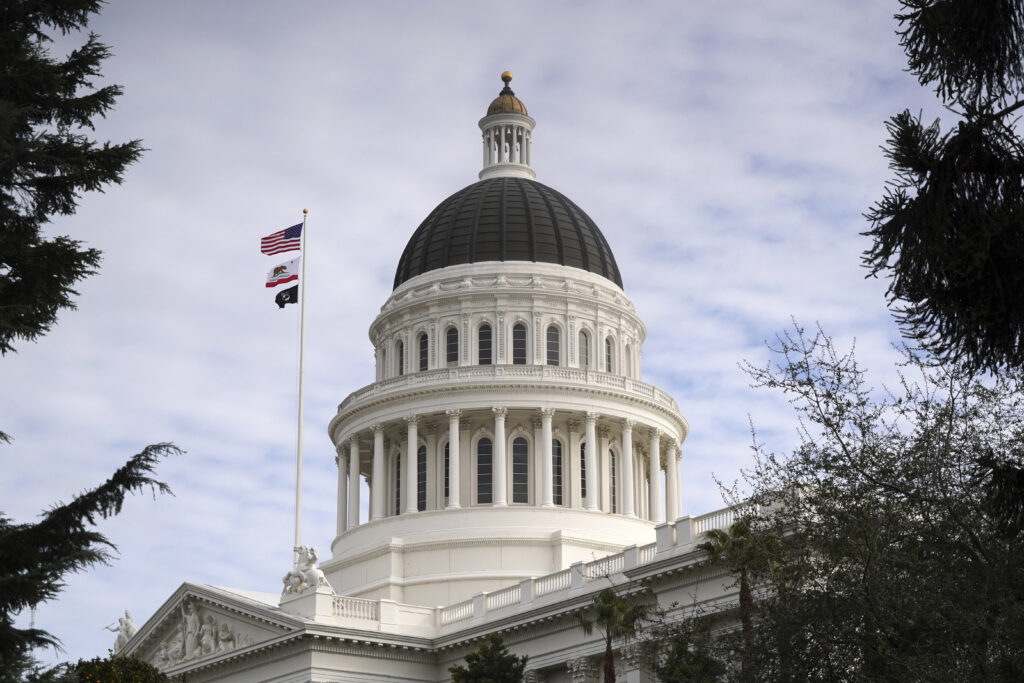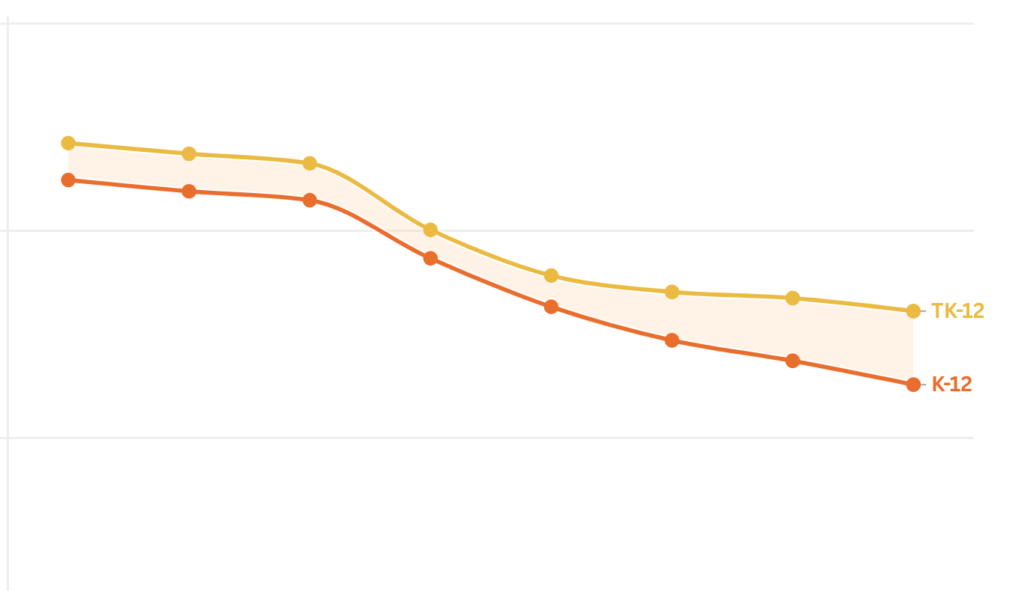
Credit: Alison Yin / EdSource
Public data posted by the California Department of Education has been incomplete, often outdated and occasionally inaccurate, forcing legislators to pass laws based on old data, researchers to delay inquiries and journalists to grapple with inaccurate information.
Californians, living in a state known globally as a center of innovation and technology, have had to cope with a state education agency that has admittedly lacked the staffing and the policies to provide much-needed data, EdSource reporting has found.
As a result, there are gaps in the knowledge needed by lawmakers, researchers, journalists and others to evaluate state programs and policies, from teacher demographics, to how many English learners become fluent in English each year, to how districts have spent a $50 million court settlement to improve early literacy.
Obtaining data from the California Department of Education (CDE) has been difficult, said Christopher Nellum, executive director of The Education Trust-West, one of the state’s most prominent social justice and advocacy organizations. There have been delays in the public release of data and a lack of consistency when it comes to the annual publication of key data sets, he said.
“In an ideal world, we would have a legislature in a state that is making data-informed decisions about legislation, and then making data-informed decisions about assessing the efficacy or impact of investments, or the interventions, and this is difficult in the state of California right now,” Nellum said.
The CDE collects data about student achievement and demographics, enrollment, course information, discipline, graduation rates, staff assignments and other data, much of it mandated by legislation.
Some data have not been updated by the department for as long as five years. The most recent available data for teacher demographics, pupil-teacher ratios, course enrollment, and class size is from 2018-19.
“In an ideal world, we would have a legislature in a state that is making data-informed decisions about legislation, and then making data-informed decisions about assessing the efficacy or impact of investments, or the interventions, and this is difficult in the state of California right now.”
Christopher Nellum
The dashboard that tracks the annual progress of K-12 students on standardized tests, chronic absenteeism, suspensions and graduation was also suspended or only partially updated due to the pandemic-related school closures until Dec. 2023. The Legislature suspended the reporting of state and local indicators on the 2020 and 2021 dashboards and, because the state didn’t have prior-year data to measure growth in 2022, that year’s dashboard was published without the full-color display.
Cindy Kazanis, the director of the Analysis, Measurement and Accountability Reporting Division at CDE, said many of the delays in reporting data have resulted from “not having enough boots on the ground.” The department is in the process of recruiting and hiring 17 new staffers.
New state mandates and changes in the way data is collected also have impacted data collection, Kazanis said. The five-year delay in updating some data is because the department has a backlog of reports and data that must be reconfigured because the state changed course codes in 2018-19, she said.
Legislation based on old data
An EdSource examination of recent state education bills shows that legislative staff have sometimes had to rely on outdated CDE data to complete analysis meant to help legislators make decisions about whether to pass laws.
One example is an analysis of Assembly Bill 2097, which used department data from 2018-19, the most recent year it was available, to show computer science offerings in California high schools, and the number and gender of students enrolled in them. The bill, if passed, will require school districts to offer computer science courses to high school students, who will be required to complete a one-year course before graduating.
An analysis of Assembly Bill 2429 also relied on data from five years ago. The legislation mandates health education courses, required by some districts to graduate, including instruction on the dangers of fentanyl use. The legislation passed on June 13.
“The committee may wish to consider that course-taking data, which is important for policy analysis and evaluation, has not been updated by the CDE since the 2018-19 school year,” stated the analysis. “The CDE reports that this data will be updated in 2024.”
Since 2018, legislators also have required that several new datasets be added to the CDE website, including absenteeism by reason, a stability rate, restraint and seclusion, special education, college-going rates, teacher assignment monitoring outcomes, five-year graduation rates and homeless students by dwelling type, according to the CDE.
Assembly Bill 1340, signed by Gov. Gavin Newsom in October, mandates that the department post test scores, suspensions, rates of absenteeism, and graduate and college-going rates for students with disabilities, disaggregated by federal disability category, on its website.
The analysis of the bill for the Assembly Education Committee was terse. “When this committee is asked to evaluate the effect of a policy on a subset of students with disabilities — for example, students who are visually impaired — it requires data about this subgroup of students’ progress on academic and other measures. Under current CDE practice, a single number for all students with disabilities is shown, obscuring important information about students’ progress, which is needed for evidence-based policymaking and to provide transparent information for the public,” it read. Legislators could not be reached to comment.
Unreliable public information
EdSource journalists working on news stories have struggled in several cases to obtain accurate, up-to-date data from the California Department of Education. This year, EdSource had to twice remove data after publication because the analysis was based on incorrect data that the department had published on its website. In both cases, school district officials notified CDE that they had inadvertently submitted incorrect data to the department, but the agency did not correct the information online.
The timing of data releases has also been an issue. When CDE refused to publicly release state test scores after districts began releasing the information to parents, EdSource enlisted legal help to require CDE to comply with the California Public Records Act.
In September 2022, just months before the election that re-elected Tony Thurmond as state superintendent of public instruction, the CDE refused an EdSource request for Smarter Balanced test scores, saying they would not be released until sometime later in the year. EdSource wrote about the delay and enlisted an attorney to write a letter outlining why the data was public information. Within a week, the department announced the scores would be released in October, before the election. The Legislature subsequently required the department to release test scores annually by Oct. 15.
Nonprofits, schools share data
Because of the difficulty obtaining education data from the state, many nonprofits and collaboratives have started collecting their own data or creating online tools, so the public can more easily access CDE data.
The Education Trust-West, which has campaigned for clear and accessible data through its Data for the People initiative for over a decade, developed a data visualization tool that uses public data on California K-12 and higher education systems. Because much of the data comes from the CDE, information is limited to what the department has made available.
CORE Districts, a collaborative of nine California school districts serving more than a million students, collects data directly from districts for its Insights Dashboard. CORE collects data from its member districts, as well as 124 other school districts and charter schools, so that comparisons can be made. But the effort doesn’t come near reporting on all nearly 1,000 districts.
“We regularly get requests from researchers to look at our data,” said Rick Miller, CORE Districts’ chief executive officer. “Going through the CDE process is so cumbersome.”
Lack of data stymies researchers
Education data that is not being collected or made publicly available recently became the central topic of a gathering of California researchers discussing educator diversity, said Kai Mathews, project director for the California Educator Diversity Project at UCLA.
“What we realized is that some people had some information that’s not publicly available, and it largely depended on past relationships,” Mathews said. “So some data is actually probably collected, it’s just not publicly shared with all of us.”
Mathews and Nellum agree that a lack of updated teacher demographic data is particularly perplexing, given the teacher shortage and the number of workforce issues facing teachers. The Education Trust-West has had to delay some of its work because it hasn’t been able to obtain teacher data, Nellum said.
“That is bad for students. It’s bad for schools. And, of course, it’s bad for any sort of hope we have of advancing equity,” Nellum said.
EdSource requested updated teacher demographic information from CDE earlier this year for a series of stories on recruiting and retaining Black teachers, an issue Superintendent of Public Instruction Thurmond had called a priority. The data was last updated in 2018-19, despite being submitted to the department annually by school districts. After sending five email requests over a month, the reporter never received the data from the CDE. Instead, the reporter used data from 2020-21, the most recent year available, from the National Center for Education Statistics.
Alix Gallagher, the director of strategic partnerships at Policy Analysis for California Education (PACE), says the lack of data on universal transitional kindergarten makes it unclear whether the state is optimizing the annual investment it is making in the grade. California will spend an estimated $3 billion a year by 2025-26, when universal transitional kindergarten (TK) will be offered to all 4-year-olds, Gallagher wrote in a commentary on the PACE website.
The state should collect data on the features of transitional kindergarten programs and on student outcomes from transitional kindergarten through second grade, to better understand the effectiveness of transitional kindergarten, she wrote.
“Right now there isn’t publicly available data for roughly the first third of a kid’s career in the public schools,” Gallagher told EdSource. “We now have universal access to TK, kindergarten, first, second and third grades. And, at the end of third grade, kids take the SBAC (Smarter Balanced Assessment). And that’s the first time, as a system, we know anything about kids’ learning.”
In fact, this year’s test scores show 57% of third-graders reading below grade level and 55% doing mathematics below grade level.
CDE data division staffing up
An annual $3 million investment from the state will allow CDE to add 17 new employees to improve data reporting to the public, Kazanis said. Twelve of the new employees have been hired. The Analysis, Measurement and Accountability Reporting Division currently has 66 employees.
Some of those resources are headed to CDE as part of the state’s launch of the first phase of its Cradle-to-Career Data System sometime this year. The longitudinal data system will provide tools to help students achieve their goals and deliver information on education and workforce outcomes, according to the website. It may also give researchers the data they are seeking.
“I’m hopeful though, because the Cradle-to-Career data system is working on a teacher dashboard, which I know will have a lot of the data that we have been waiting for,” said Nellum, who also is a member of the Cradle-to-Career (C2C) Advisory Board. Nellum spoke to EdSource for this story as a representative of The Education-Trust West and not as a member of the C2C board.
Eight of the employees will make up the new Data Visualization and Insights Office. It will collect data at the request of state policymakers and the California State Board of Education and work to make publicly available data more user-friendly, Kazanis said.
The state funding includes $300,000 to move the release date of the California School Dashboard data up incrementally each year until the annual release date is Oct. 15. This is expected to happen in 2026. Last year, data which includes test scores, graduation rates and student demographics was released on Dec. 15. Two data teams work on the dashboard full-time all year, Kazanis said.
The influx of new staff is expected to allow the department to revamp DataQuest to make it more user-friendly, Kazanis said. The new teacher reports, for example, will allow the user to make comparisons among districts, she said.
Seven new positions will focus entirely on generating teacher data, Kazanis said.
“We’ve wanted to get out from under this backlog, but part of it was recognizing that we did need more resources, and we need dedicated resources to be focused on teacher data.”
Friday: California launches the Cradle-to-Career data system, a long-awaited project to track student progress
California prepares to launch first phase of new education data system | EdSource
This story has been changed to correct the spelling for Tony Thurmond, California superintendent of public instruction and to reflect that some data sets have not been updated for the past five years, not seven years as originally stated. The paragraph about the California School Dashboard has been updated to make clear that the dashboard was suspended by the Legislature during the Covid pandemic.




)
)

